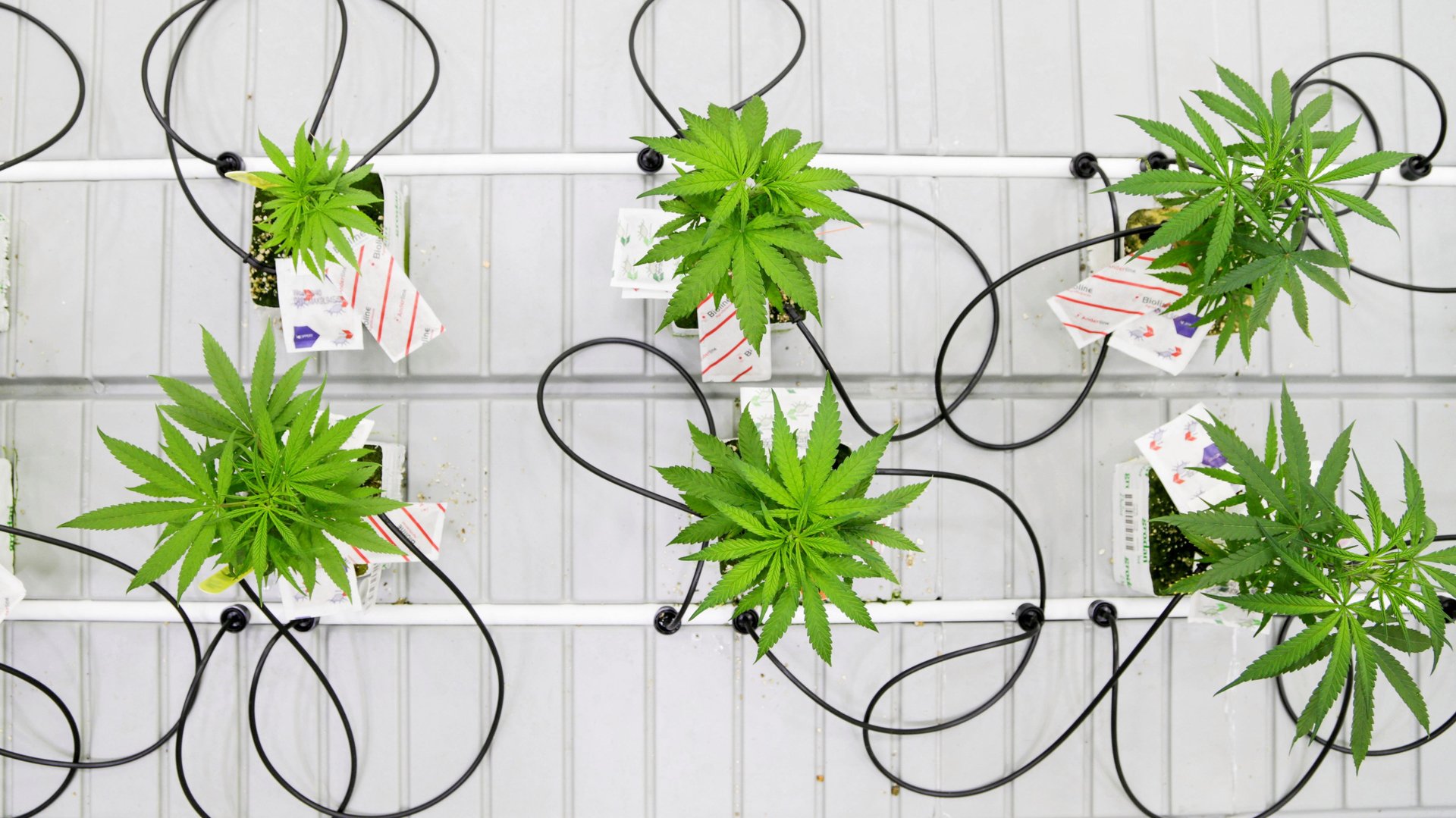Cannabis could change the way we grow everything
Legal marijuana farms tend to look more like factories than rolling green pastures. The plants stay indoors or in greenhouses, often under bright lights.


Legal marijuana farms tend to look more like factories than rolling green pastures. The plants stay indoors or in greenhouses, often under bright lights.
Due to those bright lights, growing marijuana can have a larger environmental impact than growing other crops. And that impact could multiply as the industry emerges. Over the next five years, legal and illegal growers are expected to increase their energy consumption by as much as 162%, generating 1.8 million tons of carbon emissions annually—roughly equivalent to the annual emissions of Oregon’s largest carbon emitter, a 642-megawatt coal plant that has been targeted for closing in 2020.
Growing cannabis outdoors reduces its environmental impact. Per unit of electricity, outdoor growing produces 18-times more cannabis than indoor cultivation and 14-times more than greenhouse cultivation. It also releases 25-times less carbon into the atmosphere than does indoor growing.
For a time, outdoor weed was considered inferior. Though it gets the job done, it tends not to produce “bud porn” specimens, like the ones on the cover of High Times and all over Instagram (instead, the buds often sprout tiny brown hairs, and can have a “frosted” look from the accumulation of the tiny, crystalline glands that produce THC). But thanks to rising awareness of weed’s environmental impact, “sun-grown” cannabis is enjoying a resurgence in places where it’s legal and there’s a suitable climate.
Legalization itself should also help reduce the energy impact of weed, since growing weed legally typically uses far less power and water than doing so illegally. (Among other reasons, illegal growers tend to operate on a smaller scale, and don’t stand to recoup as much money from using practices that have less environmental impact).
Legal pot could, somewhat counterintuitively, also mean more efficient farming in general.
When farmers are growing cannabis worth hundreds of dollars per pound, they’re more willing to invest in agriculture technology than if they’re selling lettuce for $1 a pound. As a result, investment is going into developing LEDs for farming that would be far more energy efficient than the high-pressure sodium light bulbs that marijuana growers often use now.
As the technology advances, it will inevitably trickle down to more conventional crops, which could lead to innovations in indoor agriculture, which could eventually reduce the environmental impact of growing not just pot, but food.